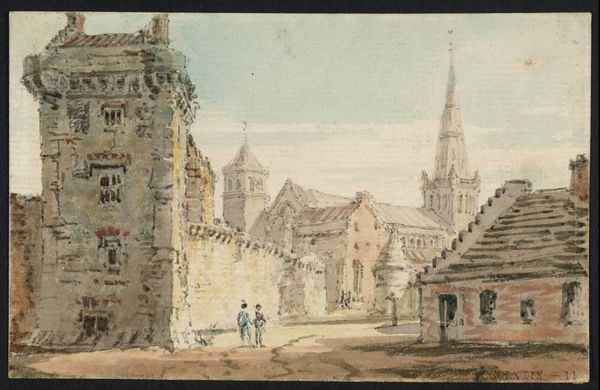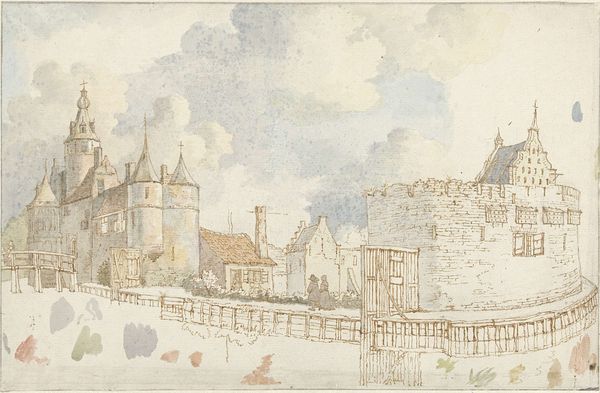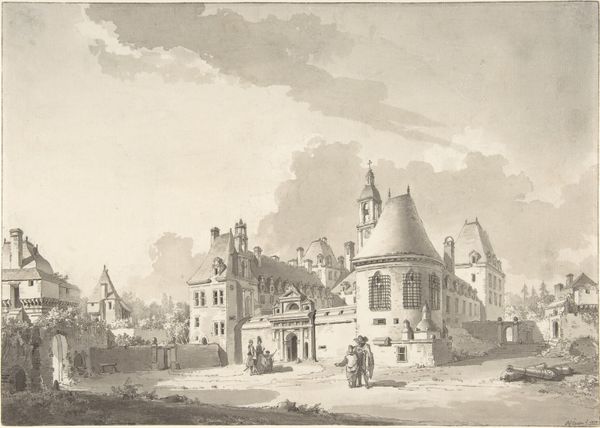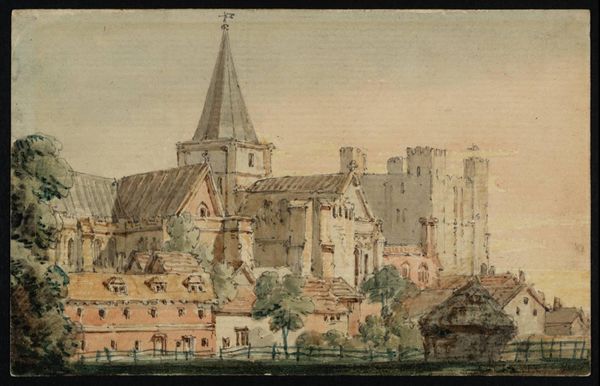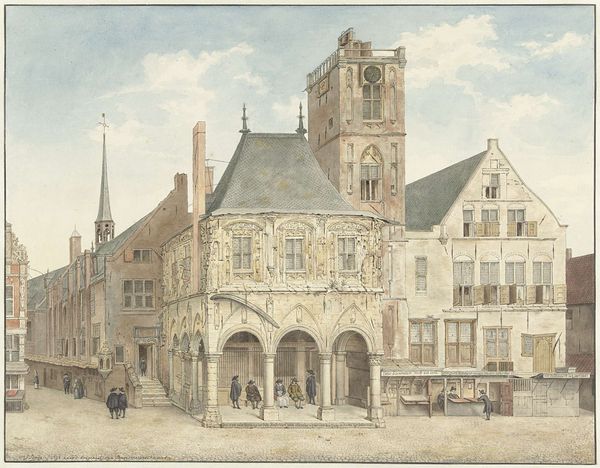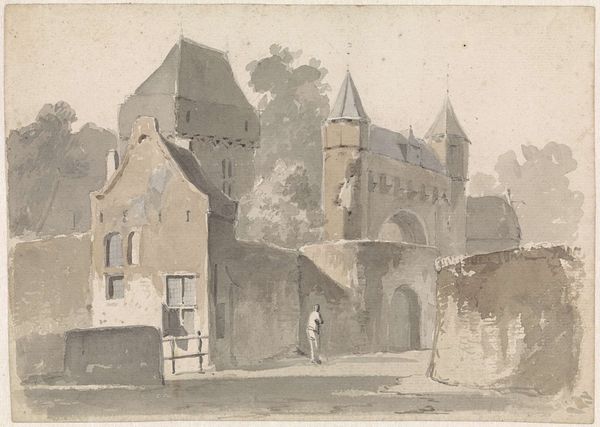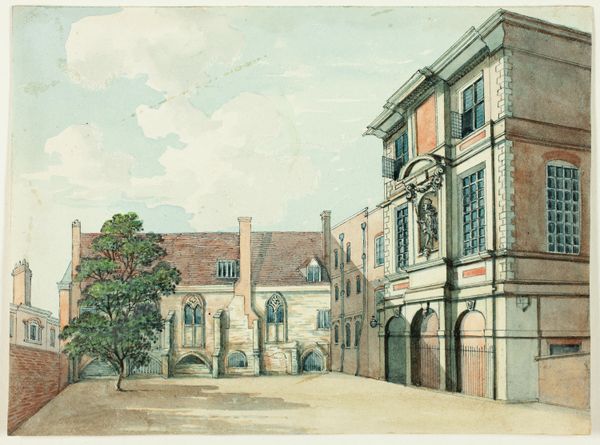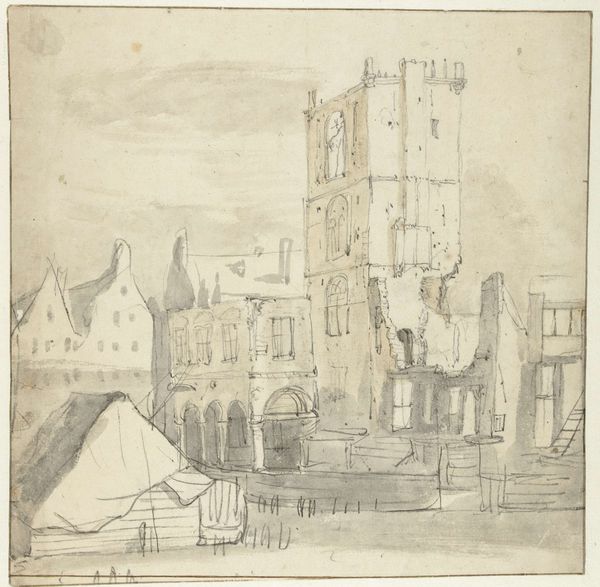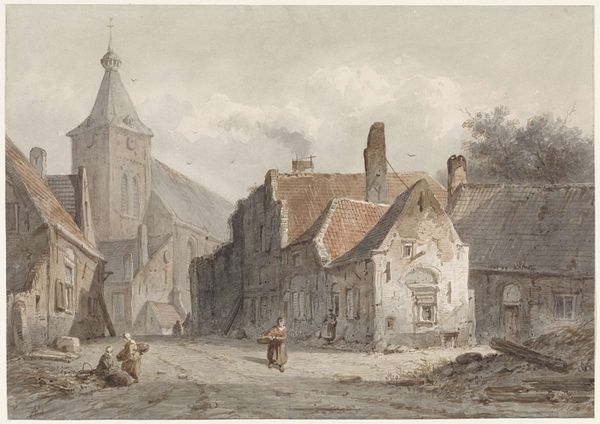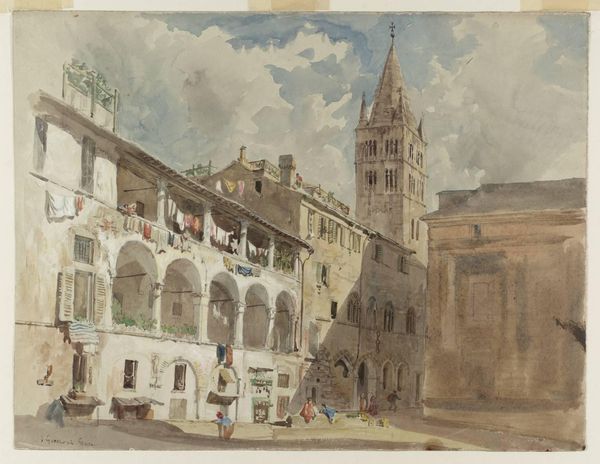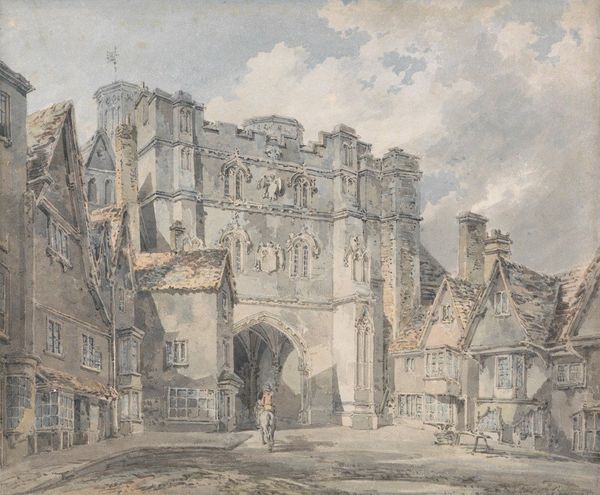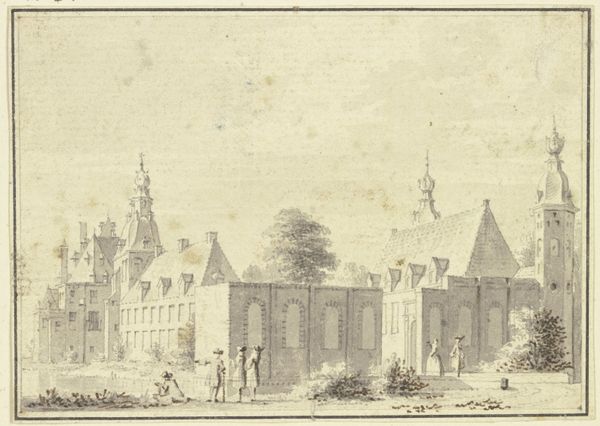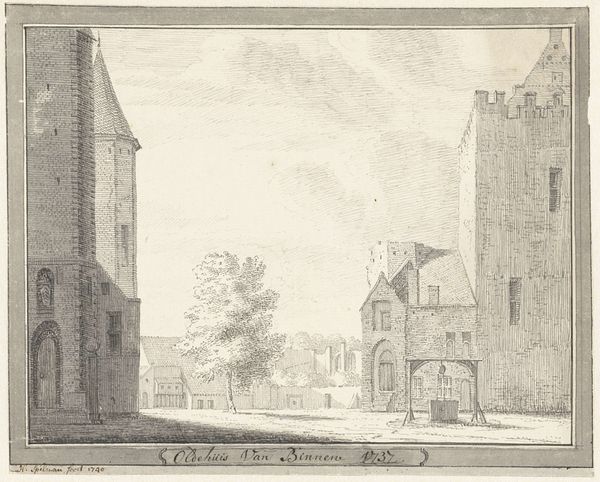
Dimensions: support: 324 x 462 mm
Copyright: CC-BY-NC-ND 4.0 DEED, Photo: Tate
Editor: This watercolor, "St Aldate’s Church with Tom Tower and Part of Pembroke," by an anonymous 18th-century British artist, feels like a nostalgic glimpse into Oxford. What social dynamics do you think are being represented here? Curator: Considering the period, the architecture depicted speaks to the power structures of the time. The church and college represent established authority, and their prominence likely overshadows the lives of ordinary citizens. What narratives are missing from this idyllic scene? Editor: That's a good point. We don't see the working class or any signs of dissent. It's a very controlled image. I now wonder how the artist was supported. Curator: Exactly. Understanding the artist's patronage, their potential biases, and the exclusion of marginalized voices provides a more complete picture. Now how might we challenge this romanticized view? Editor: By seeking out alternative perspectives and questioning the dominant narrative, I suppose. I hadn't considered that the image itself might be making a statement. Curator: Precisely, art can reflect and reinforce societal inequalities, and it is important to be aware of that. Thanks, this has changed my initial view.
